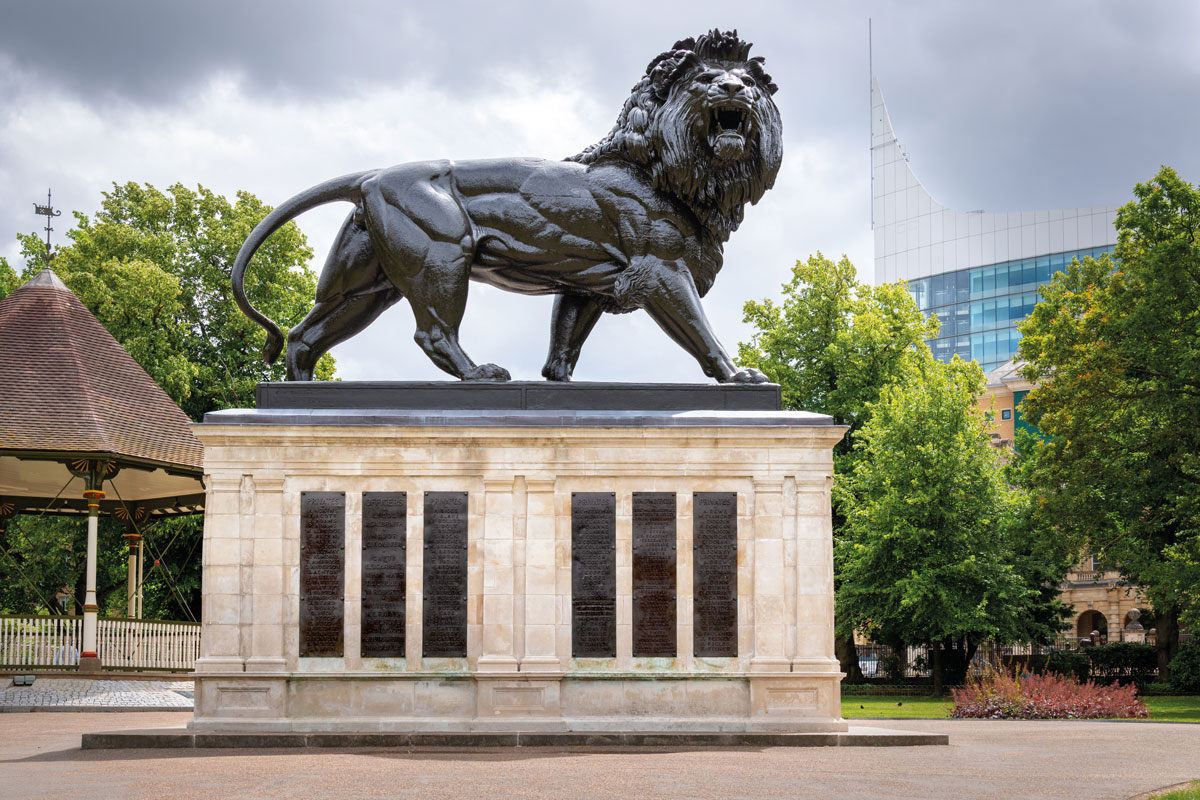Lewis Proudfoot, managing director of Cliveden Conservation, discusses the variety of approaches taken when conserving external stone monuments
Monument conservation takes many forms and includes the whole gamut of masonry conservation techniques and skills. Stone cleaning, repairs, and carved replacement all feature, as well as the treatment of a whole host of materials from cast iron and lead to marble and sandstone.
In the summer of 2022, our team spent 16 weeks at Brompton Cemetery, caring for eight of the monuments in the cemetery which is managed by The Royal Parks charity. Each monument was different, and each had a different story – we worked on a finely carved Portland stone chest tomb to Philip Nowell, the builder responsible for the initial construction of Brompton Cemetery – one of the ‘magnificent seven’ privately run burial grounds established in the 1830s and 40s. Here, we cleaned the stonework and re-carved delicate finials to the blind tracery around the tomb. Emiline Pankhurst’s red sandstone Celtic cross received mortar repairs and consolidation to the deteriorated stone, and the pink marble chest tomb of Valentine Cameron Prinsep, a painter, writer and professor at the Royal Academy was cleaned with laser and poultices, with mortar repairs to match the marble.
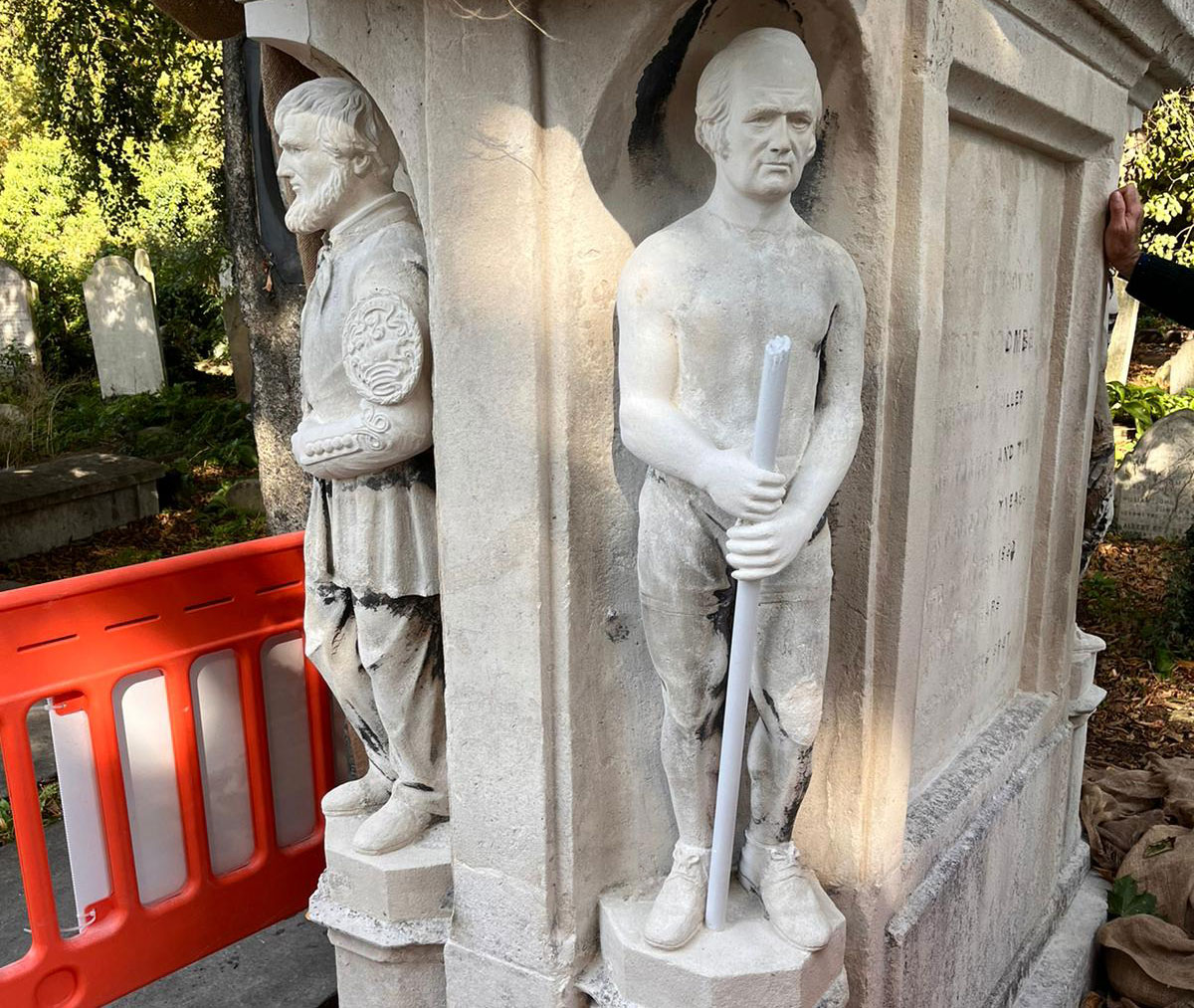
Robert Coombes was one of many watermen on the Thames
Two of the larger tombs were to Robert Coombes and Harvey Lewis. Robert Coombes (1808 – 1860) was born in Vauxhall and was one of many watermen on the Thames, going on to hold the title of professional Sculler of England until 1842, and coaching both Oxford and Cambridge rowing teams. We carved the missing heads to the four oarsmen on each corner of the tomb, and we repaired the statuary with stone and mortar repairs.
The mausoleum to Harvey Lewis was the largest of all eight, requiring new cast iron railing posts, overhaul of the metal door and a complicated stone indent to the valley of the cruciform roof, as well as cleaning and other stone repairs and repointing.
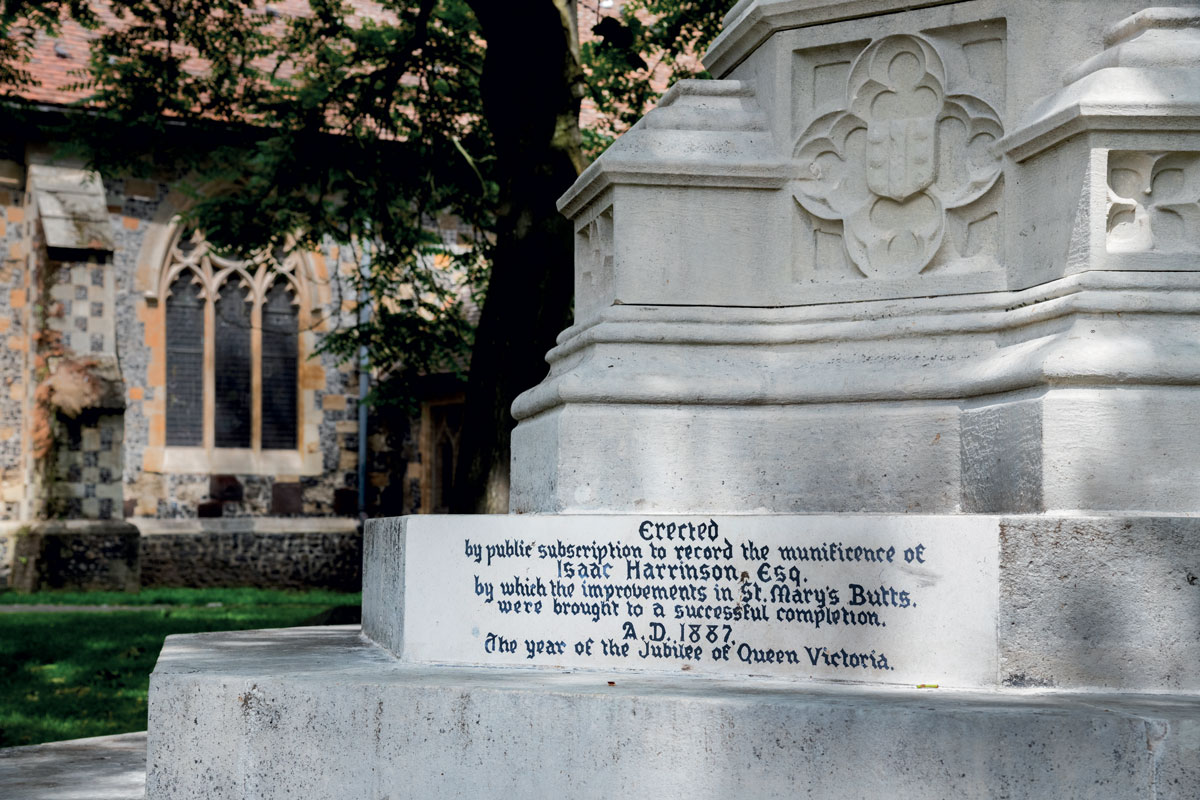
The Harrison Cross needed a full clean and worn letters were recut
Over in Berkshire, our team of conservators were tackling four monuments as part of the Reading Heritage Action Zone scheme of projects and a much larger monument – the giant cast iron Maiwand Lion. The monuments are sited in very public locations and suffer from wear and tear from the public, pigeons and the simple ravages of time. The team cleaned the marble Queen Victoria statue and the stone Harrison Cross, as well as recutting the worn lettering to the latter memorial. The Simeon monument received a similar treatment, using the ThermaTech system to clean off historic dirt and grease, bronze plaques were re-patinated and railings redecorated.
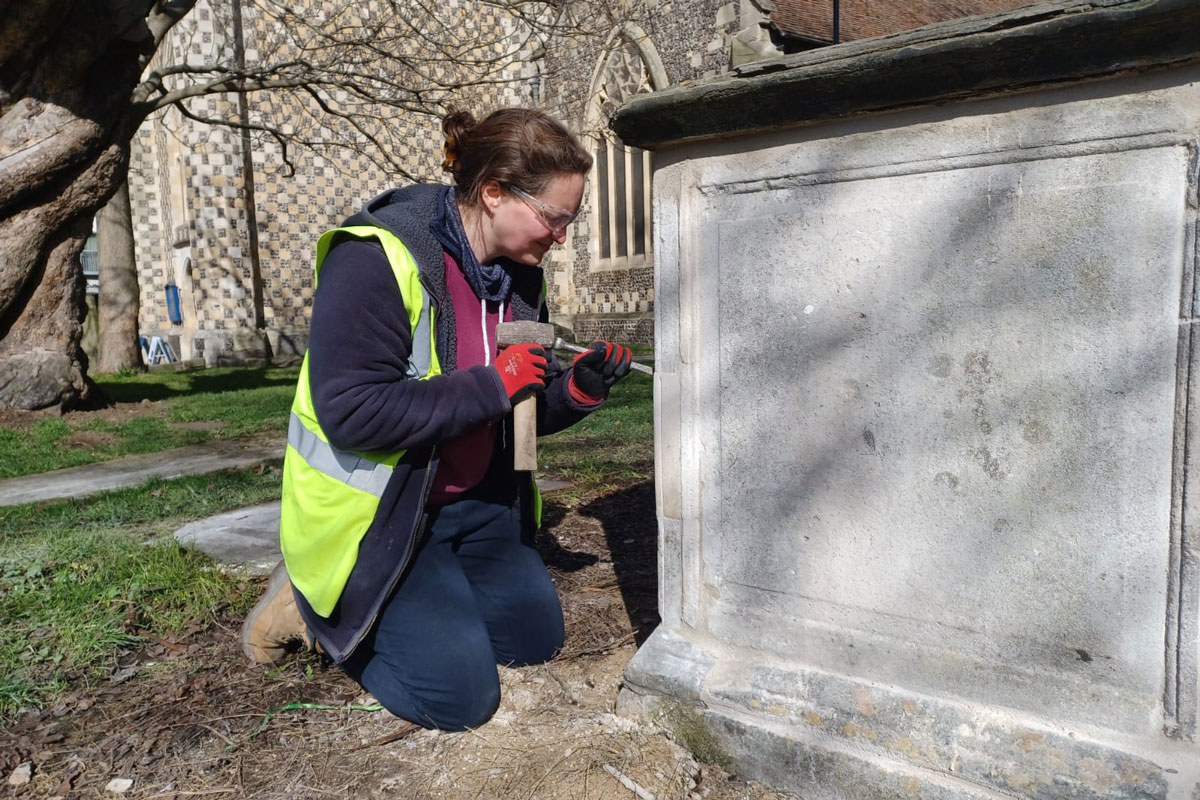
The team needed to dismantle the Zinzan tomb in order to repair it
The Zinzan tomb proved an altogether different proposition. This chest tomb had completely collapsed, with two of the four sides broken into fragments, and the York stone lid, which was delaminating, had fallen into the centre. Our treatment required us to carefully dismantle and then piece together this jigsaw puzzle of a project, pinning the fractured stone elements back together with basalt bars and securing with stainless cramps back to a new brick core. The lettering was sharpened, and the whole piece was repointed and cleaned – reinstating a very prominent memorial to better resist the challenges of vandalism and public wear and tear.
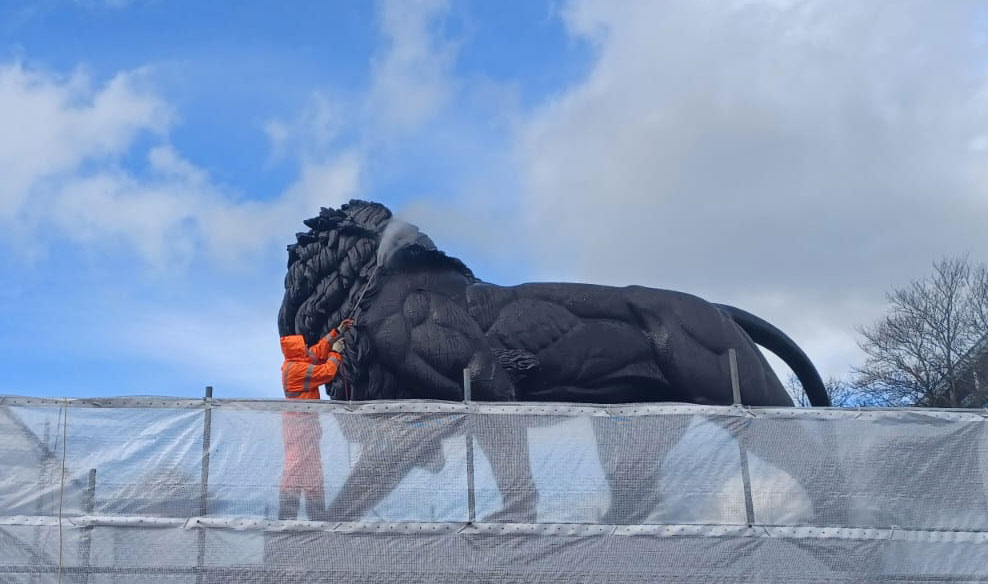
The Maiwand Lion being cleaned
Finally, in the centre of Forbury Gardens, the majestic Maiwand Lion received a complete overhaul – the Portland ashlar plinth was cleaned with steam and poultices to take back copper staining without over-cleaning the stone. A biocide was applied and all vegetation was carefully removed before 30 stone indents and whole replacement blocks were undertaken, and a damaged section of the cornice pinned back into place. The majority of joints were repointed, and the granite paving around the base of the plinth was cleaned and grouted. The bronze plaques were cleaned and refixed, and the large cast iron lion was cleaned and redecorated giving him a new lease of life to continue his reign over Forbury Gardens.
The conservation of historic tombs and monuments requires much sensitivity not only to the methods we use and preserving original materials with minimal intervention but also to carrying out work in an appropriate and ethical manner with respect to the environment, especially when working in a cemetery. We always aim for best practice, which often means a willingness to engage with members of the public to show conservation in action.
For more information visit clivedenconservation.com

